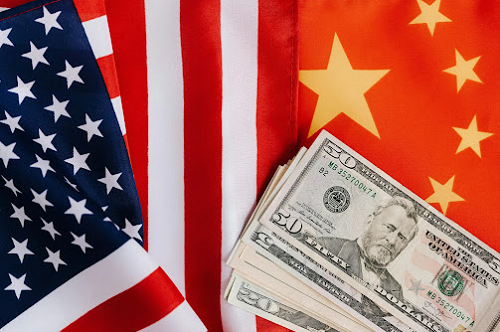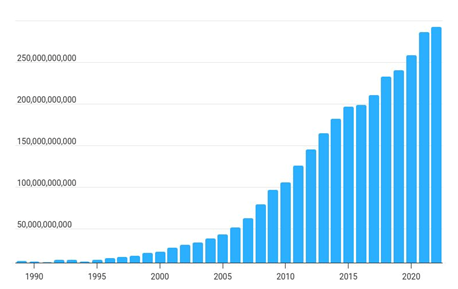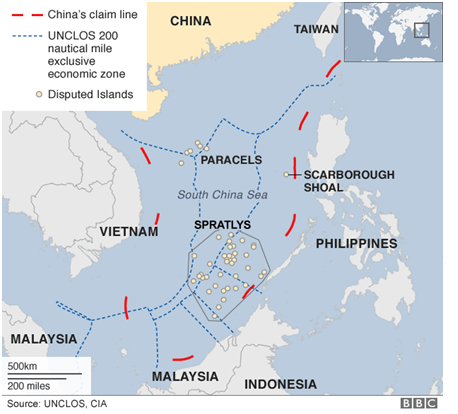
“Rebalancing trade ties is essential for preserving national security.”
In the decades following the Cold War, global trade has driven substantial economic growth and integration. However, as geopolitical dynamics evolve, the traditional view that the benefits of trade outweigh political considerations is no longer supported. This article examines the tensions between economic integration and foreign policy interests, primarily through the lens of the United States (US)–China relationship. The article proposes that recalibrating trade policies is essential for safeguarding national security. In doing so, policymakers can identify strategies that balance the benefits of trade with the realities of emerging global threats.
Trade and National Security
Reflecting the tenets of the international relations theory of liberalism, advocates of the traditional approach highlight the benefits of trade. This includes improved standards of living and the opportunity for less developed countries to break the cycle of poverty. Indeed, the main argument in favour of trade is improved economic growth and a lower cost of consumer goods. A second argument is that trade promotes peace and stability through economic interdependence.
Given the benefits of trade, why consider foreign policy? The answer is clearly national security. While economic integration may raise the cost of military conflict, this does not prevent trading nations from pursuing incompatible foreign policy objectives. The prevalence of global conflicts in recent years highlights this point.
The US-China relationship provides an instructive case study. In 2024, the US imported $438.9 billion worth of goods from China. These imports bolster the Chinese economy, which has seen exponential growth since the 1990s. This, in turn, provides Beijing with a growing tax base and industrial capabilities. China has utilised its economic strength to develop a strong domestic military industry. This is evidenced by the country’s reduction in military imports by 65% between 2020 and 2024 in favour of domestic production. This trend has been accompanied by a dramatic increase in military spending from $11.2 billion in 1990 to $292 billion in 2022.

China’s Military Spending, Source: macrotrends.com
China’s Global Ambitions
The rapid growth of China’s military budget must be considered in the context of its foreign policy objectives. In the region, China has made broad territorial claims over the South China Sea. It asserts rights to a region demarcated by the so-called Nine Dash Line that encompasses approximately 90% of the South China Sea. China’s claims are based on a questionable legal basis and were rejected by the Permanent Court of Arbitration in 2016. China was quick to dismiss the ruling as “null and void”.
The South China Sea contains trading routes accounting for $3.37 trillion worth of goods. This represents 21% of total global trade. In addition, it contains natural resources in the form of oil and gas reserves and vast fishing stocks. These are resources China claims for itself to the exclusion of surrounding nations. China’s claims have caused conflicts with several of its neighbours: Vietnam, the Philippines, Malaysia, Indonesia, Brunei, and Taiwan. China has used its coast guard and military to interfere with vessels of these nations within the claimed areas.
China not only asserts control over the South China Sea, but also over Taiwan. Beijing has made it very clear that it intends to annex Taiwan. China periodically engages in military activities along Taiwan’s shores. This includes military exercises surrounding the island and military patrols.

U.S. National Security Interests
U.S. national security is at a critical crossroads. Should China succeed in exerting control over the South China Sea, Beijing could potentially leverage its position to restrict or block trade. This could jeopardise access to technology and other resources essential to the U.S. economy and security. The ramifications would go beyond trade. China could exert political power in the region to the detriment of vital U.S. allies, most of which are emerging or established democracies.
An analogous situation can be found in Russia, where Vladimir Putin has gradually exerted influence over neighbouring democracies in an effort to destabilize them. This includes the formerly democratic nation of Belarus, which has become a Russian proxy. Russia has also been able to gain influence in Serbia, Hungary, Romania, and Moldova. Russia’s military interventions in Ukraine and Georgia are a warning to nations in Southeast Asia. Unlike Russia, China has so far refrained from direct interference in neighbouring nations. But as China’s ambitions and military capabilities continue to grow, this is very much a possibility.
The importance of Southeast Asia to U.S. foreign policy is reflected in regional security cooperation. The US has formal and informal security agreements with the Philippines, Thailand, South Korea, Japan, Singapore, Vietnam, Indonesia, and Malaysia. With regard to Taiwan, US Secretary of Defence Pete Hegseth recently warned that there would be “devastating consequences” if China were to invade Taiwan.
The challenges China poses to U.S. foreign policy are not limited to the region. China has shown a willingness to actively undermine Western interests in global conflicts. It has developed a close relationship with Russia since the 1990s with the stated objective of changing the existing world order. In the Ukraine war, there is evidence that China has provided Russia with materials and equipment for weapons production and has supported Russia diplomatically. China has developed close ties with two other Western foes, Iran and North Korea.
The Integration of Trade and Foreign Policy
“Strategic realignment of trade safeguards democratic institutions and fosters sustainable growth.”
All nations face a potential conflict between the benefits of trade and its political implications. The US gains economically from trade with China, but this also adversely affects U.S. national security interests. An effective way to manage this dilemma is to integrate trade into foreign policy.For the US, this means reconsidering its economic ties with China. The main trade advantage China possesses is its low cost of manufacturing. But the same is true for the Philippines, Thailand, India, Malaysia, Indonesia, and many other emerging democracies. Shifting trade to these nations will promote economic growth on both sides, protect democratic institutions in politically vulnerable nations, and strengthen diplomatic relations.
There are examples of successful integrations of trade and foreign policy. The free trade agreements between Mexico, Canada, and the United States have strengthened economic and political ties, despite recent challenges under the Trump administration. Another example is the Comprehensive and Progressive Agreement for Trans-Pacific Partnership (CPTPP) that economically ties countries in the Americas with those in Southeast Asia. Notably, China’s expression of interest to join this trading block was met with a cold shoulder. These and similar treaties have created opportunities for cooperation that promote economic growth and political stability.
Conclusion
Trade offers substantial benefits. Yet it can also lead to conflicts with foreign policy imperatives. It is advisable for nations to choose their trading partners wisely, having regard to both economic and foreign policy objectives. Strategic trade agreements provide an opportunity to harness the benefits of trade without compromising national security. Decades of free trade have created a high degree of economic integration. However, past economic ties are not a hurdle. Developing new trade relations takes time. Now is the opportunity to begin the process.
Leave a Reply